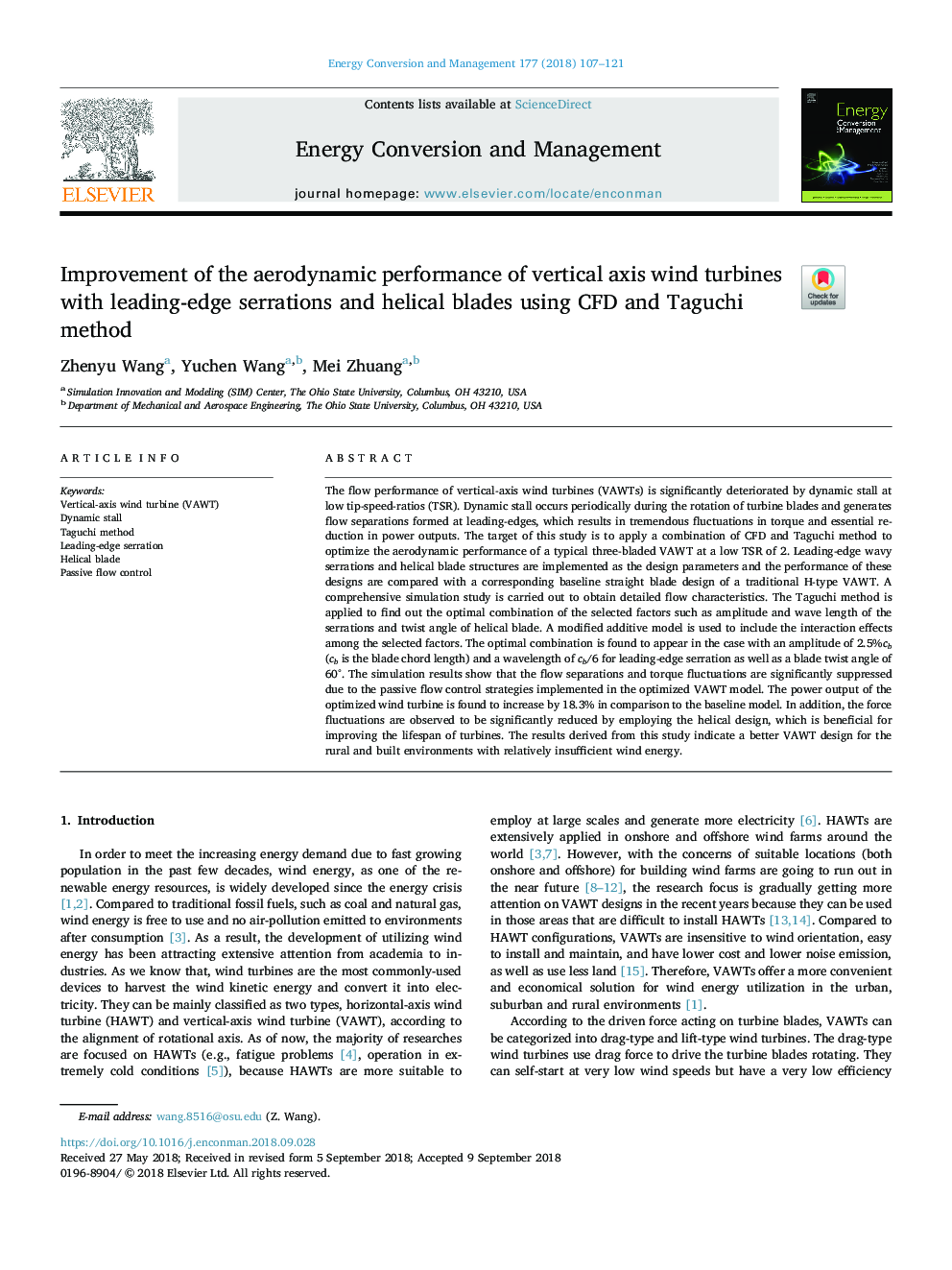| کد مقاله | کد نشریه | سال انتشار | مقاله انگلیسی | نسخه تمام متن |
|---|---|---|---|---|
| 10226454 | 1701271 | 2018 | 15 صفحه PDF | دانلود رایگان |
عنوان انگلیسی مقاله ISI
Improvement of the aerodynamic performance of vertical axis wind turbines with leading-edge serrations and helical blades using CFD and Taguchi method
دانلود مقاله + سفارش ترجمه
دانلود مقاله ISI انگلیسی
رایگان برای ایرانیان
کلمات کلیدی
موضوعات مرتبط
مهندسی و علوم پایه
مهندسی انرژی
انرژی (عمومی)
پیش نمایش صفحه اول مقاله

چکیده انگلیسی
The flow performance of vertical-axis wind turbines (VAWTs) is significantly deteriorated by dynamic stall at low tip-speed-ratios (TSR). Dynamic stall occurs periodically during the rotation of turbine blades and generates flow separations formed at leading-edges, which results in tremendous fluctuations in torque and essential reduction in power outputs. The target of this study is to apply a combination of CFD and Taguchi method to optimize the aerodynamic performance of a typical three-bladed VAWT at a low TSR of 2. Leading-edge wavy serrations and helical blade structures are implemented as the design parameters and the performance of these designs are compared with a corresponding baseline straight blade design of a traditional H-type VAWT. A comprehensive simulation study is carried out to obtain detailed flow characteristics. The Taguchi method is applied to find out the optimal combination of the selected factors such as amplitude and wave length of the serrations and twist angle of helical blade. A modified additive model is used to include the interaction effects among the selected factors. The optimal combination is found to appear in the case with an amplitude of 2.5%cb (cb is the blade chord length) and a wavelength of cb/6 for leading-edge serration as well as a blade twist angle of 60°. The simulation results show that the flow separations and torque fluctuations are significantly suppressed due to the passive flow control strategies implemented in the optimized VAWT model. The power output of the optimized wind turbine is found to increase by 18.3% in comparison to the baseline model. In addition, the force fluctuations are observed to be significantly reduced by employing the helical design, which is beneficial for improving the lifespan of turbines. The results derived from this study indicate a better VAWT design for the rural and built environments with relatively insufficient wind energy.
ناشر
Database: Elsevier - ScienceDirect (ساینس دایرکت)
Journal: Energy Conversion and Management - Volume 177, 1 December 2018, Pages 107-121
Journal: Energy Conversion and Management - Volume 177, 1 December 2018, Pages 107-121
نویسندگان
Zhenyu Wang, Yuchen Wang, Mei Zhuang,